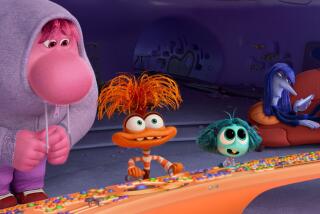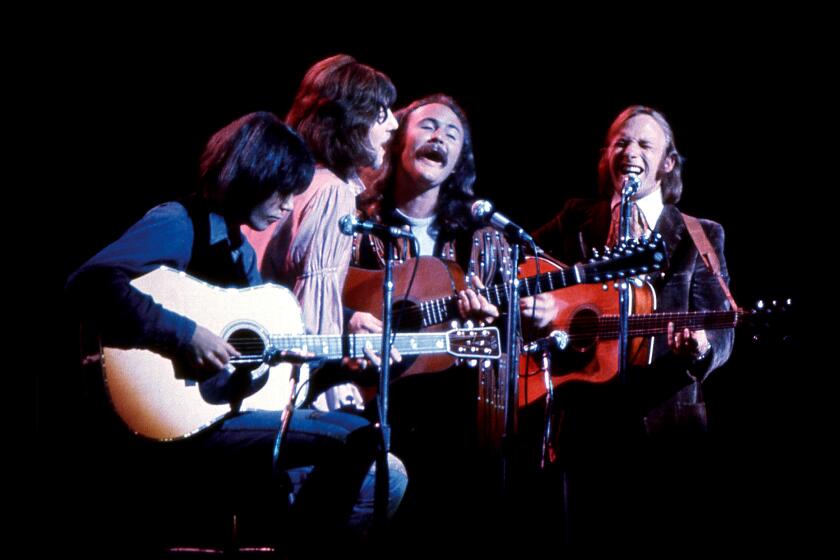Violence: Merely Entertaining or Mainly Evil? : Studies Indicate Screen Mayhem Shapes Lives
- Share via
“Soul-Searching on Violence by the Industry” (Calendar, May 18) doesn’t “search” deeply enough.
What transformed wide-eyed babies into L.A. rioters? Close to 1,000 studies in recent decades would indicate that it was the steady diet of violent media they ingested from cartoons to video games to slasher films.
If parents cared as much about what children feed their brains as they do about what they feed their stomachs, they wouldn’t abdicate their parental roles to the media. Each generation of children is being increasingly raised by TV sets and movie screens and coming to believe in the values media tout.
We readily accept that children learn the alphabet from “Sesame Street,” why can’t we accept that they learn the ABCs of murder and mayhem from gratuitously violent entertainment?
Daily, I hear writers, producers and other industry people say, “It’s only entertainment!,” meaning no one believes or acts upon what they see on-screen. Yet these same people sell product-placement spots and commercial time for billions of dollars per year. If a 30-second commercial can sell soap, then surely years of glamorized murder, rape and mutilation can sell violence.
Why does Hollywood continue to generate violent entertainment quicker than you can say, “ ‘Kill’ the lights, we’re ready to ‘shoot’ ”?
- Violence sells. Just like a drug, violence makes people high by stimulating the neuropsychological components of their inborn aggressive drive. If a child is raised in a loving atmosphere, the aggressive drive becomes socialized into normal ambition and competitiveness, but in an atmosphere of graphic media violence, the aggressive drive becomes distorted into real-life violence. And, just like a drug, people need ever-increasing doses to achieve the same high. Violence sells. So does crack cocaine. Does that make it OK?
- With the recession hurting Hollywood pocketbooks more than anticipated, exportation of films and TV shows has taken on greater importance. Consequently, studios have turned to violence even more, since it is translated without words. It’s sadly ironic that just as the Cold War ended and we could begin to hope for global peace, America is exporting products that will cause global warfare.
- Individual writers, producers and executives feel overwhelmed by the concept that what they write, produce or choose to air could change the lives of millions of people, so they deny the power of their work to avoid a responsibility they often feel ill-equipped to handle.
- All scripts require dramatic conflict but to take that literally and plug in gratuitous violence is laziness. In the rush to create more product, artistry is lost.
- In every creative work, the unconscious minds of the creators are reflected. There is clearly a lot of anger coming from the unconscious minds of Hollywood and being reflected on the screen and inflicted upon the audience. At least some of this unconscious anger in the minds of the creators is generated by the brutal logic Hollywood inflicts upon its own.
- Money, money and more money.
The answer is not censorship but the industry is long overdue in taking responsibility for what it feeds society. Whether one argues that “life imitates art” or “art imitates life,” it is indisputable that the increasing violence in our streets is paralleling the increasing violence in our media.
Do the riots have to invade the studios and homes of the industry for this awareness to penetrate? This time it was close. How much closer does it need to get before the industry acknowledges that the “reel” violence it manufactures is killing “real” people in the streets?
More to Read
The biggest entertainment stories
Get our big stories about Hollywood, film, television, music, arts, culture and more right in your inbox as soon as they publish.
You may occasionally receive promotional content from the Los Angeles Times.










